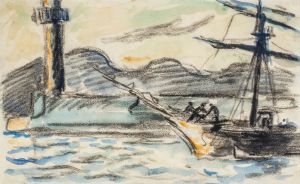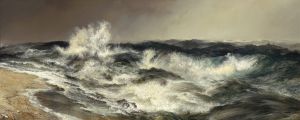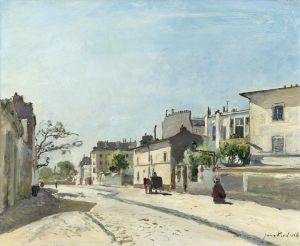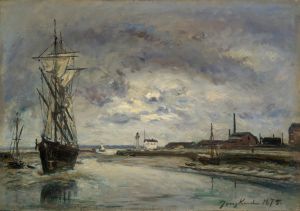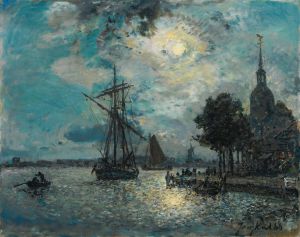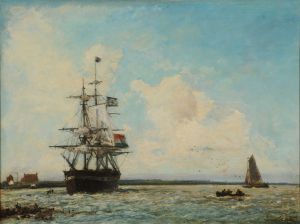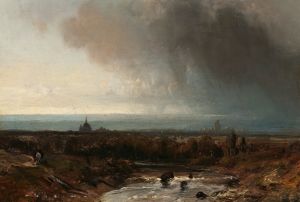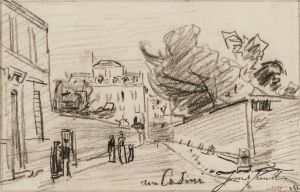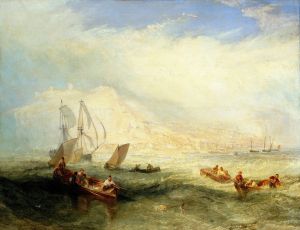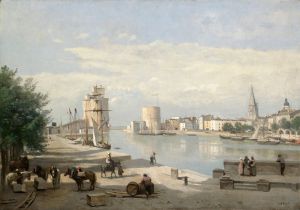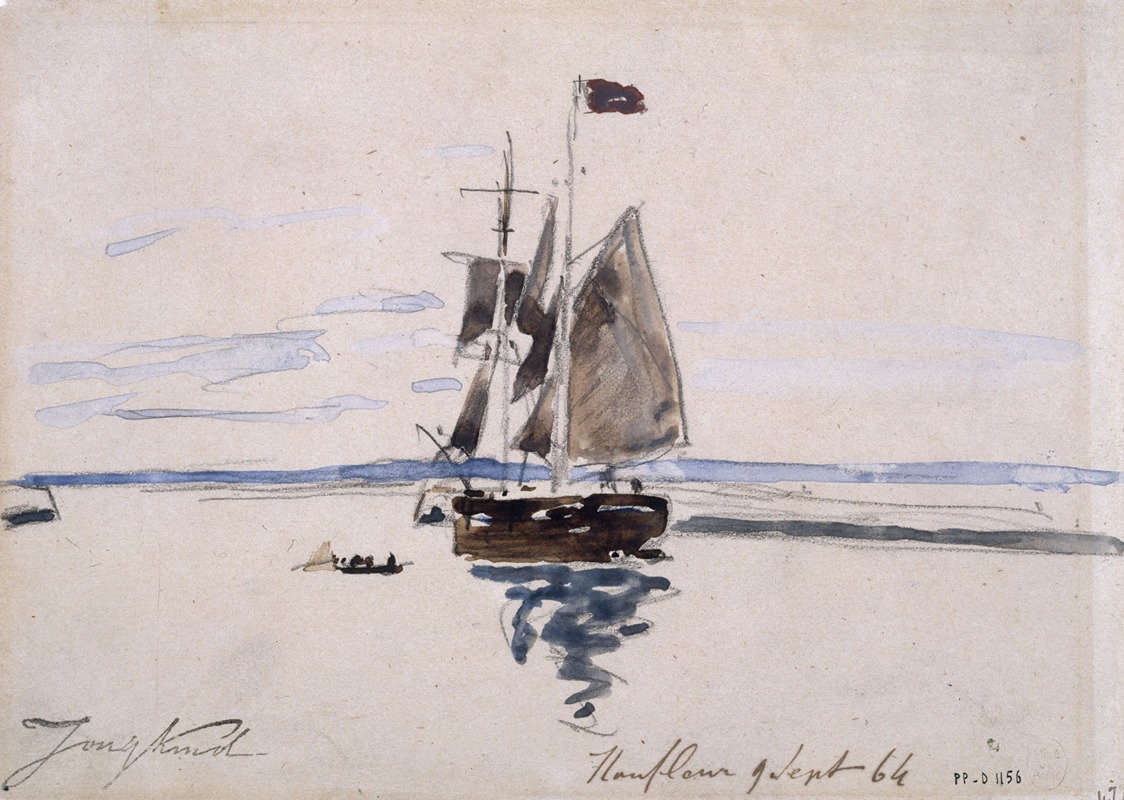
La Mer à Honfleur
A hand-painted replica of Johan Barthold Jongkind’s masterpiece La Mer à Honfleur, meticulously crafted by professional artists to capture the true essence of the original. Each piece is created with museum-quality canvas and rare mineral pigments, carefully painted by experienced artists with delicate brushstrokes and rich, layered colors to perfectly recreate the texture of the original artwork. Unlike machine-printed reproductions, this hand-painted version brings the painting to life, infused with the artist’s emotions and skill in every stroke. Whether for personal collection or home decoration, it instantly elevates the artistic atmosphere of any space.
Johan Barthold Jongkind was a Dutch painter known for his significant contributions to the development of Impressionism. Born on June 3, 1819, in Lattrop, Netherlands, Jongkind spent much of his career in France, where he became an influential figure among the Impressionist painters. His works are celebrated for their innovative use of light and color, capturing the transient effects of atmosphere and weather.
One of Jongkind's notable works is "La Mer à Honfleur," which translates to "The Sea at Honfleur." This painting exemplifies Jongkind's mastery in depicting marine and coastal scenes, a subject he frequently explored throughout his career. Honfleur, a charming port town in Normandy, France, was a popular destination for artists in the 19th century due to its picturesque landscapes and vibrant light. Jongkind was particularly drawn to this region, and it became a recurring theme in his oeuvre.
"La Mer à Honfleur" showcases Jongkind's ability to capture the essence of the sea and sky with remarkable clarity and sensitivity. The painting is characterized by its loose brushwork and a keen attention to the interplay of light and shadow. Jongkind's technique involved applying paint in a way that allowed the colors to blend naturally, creating a sense of movement and fluidity that mirrors the ever-changing nature of the sea.
In this work, Jongkind employs a palette that reflects the natural hues of the coastal environment. The blues and greens of the water are juxtaposed with the softer tones of the sky, creating a harmonious balance that draws the viewer into the scene. The composition is both dynamic and serene, capturing a moment in time where the sea meets the sky, and the horizon stretches infinitely.
Jongkind's influence on the Impressionist movement is well-documented. His approach to painting en plein air, or outdoors, was revolutionary at the time and inspired many younger artists, including Claude Monet. Monet himself acknowledged Jongkind's impact on his work, particularly in the way he perceived and rendered light and atmosphere. Jongkind's ability to convey the fleeting effects of light on water and sky laid the groundwork for the Impressionists' exploration of similar themes.
"La Mer à Honfleur" is a testament to Jongkind's skill as a painter and his deep connection to the natural world. The painting not only captures the physical beauty of the coastal landscape but also evokes a sense of tranquility and introspection. Through his art, Jongkind invites viewers to experience the subtle nuances of nature and the profound impact of light on the environment.
Today, Johan Barthold Jongkind is remembered as a pivotal figure in the transition from traditional landscape painting to the more modern, expressive techniques of Impressionism. His works continue to be celebrated for their innovative approach and their ability to convey the ephemeral beauty of the natural world. "La Mer à Honfleur" remains a significant piece within Jongkind's body of work, exemplifying the qualities that made him a revered artist of his time.





